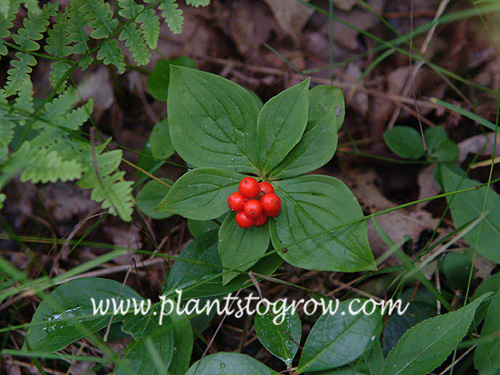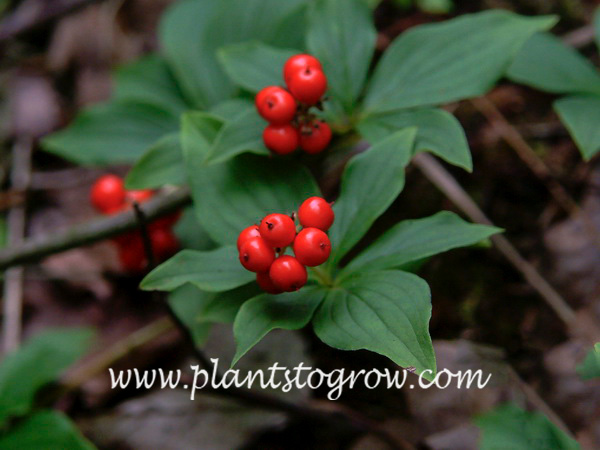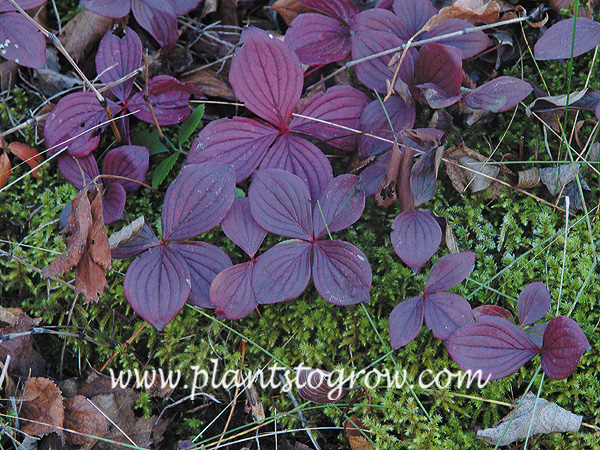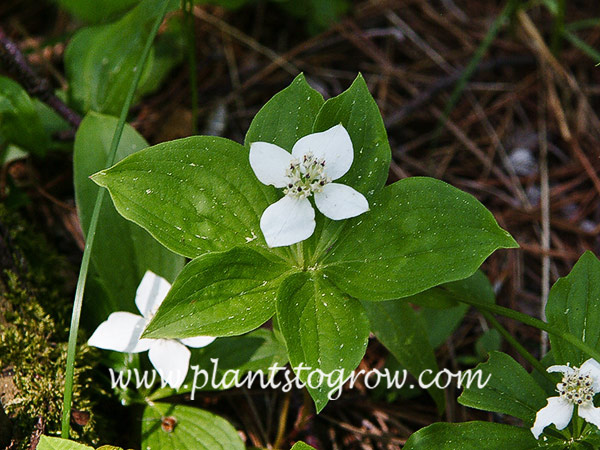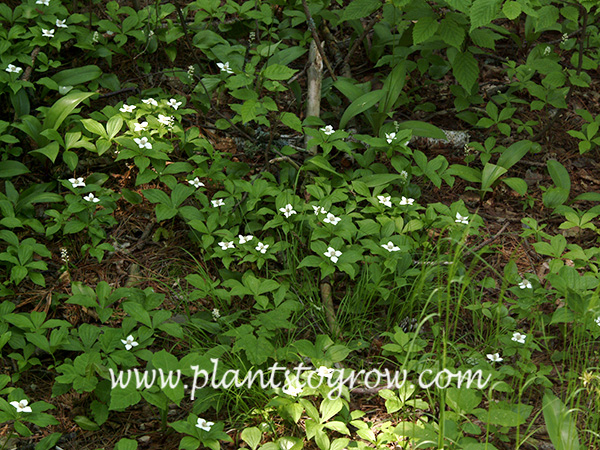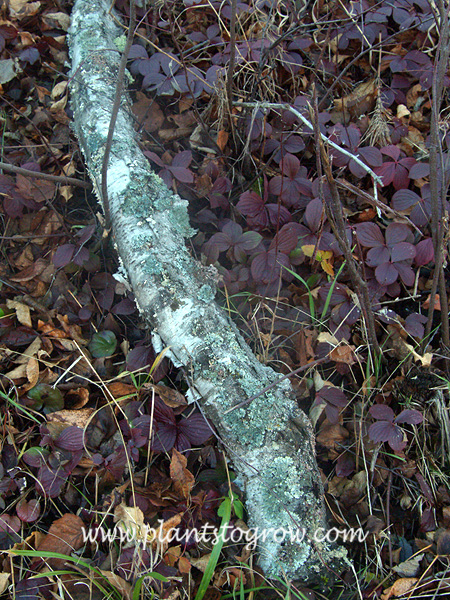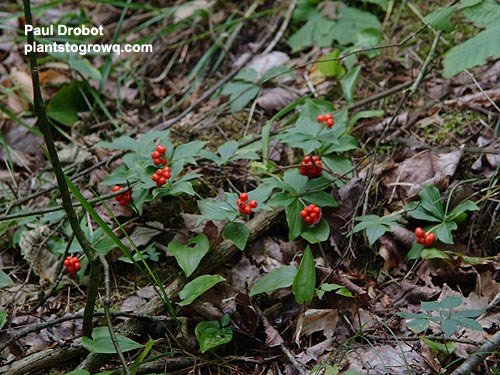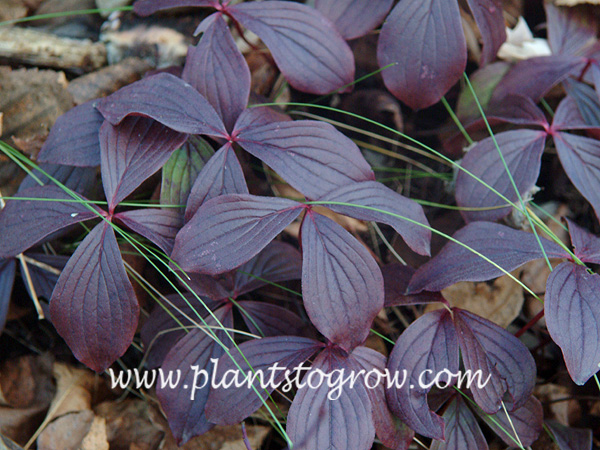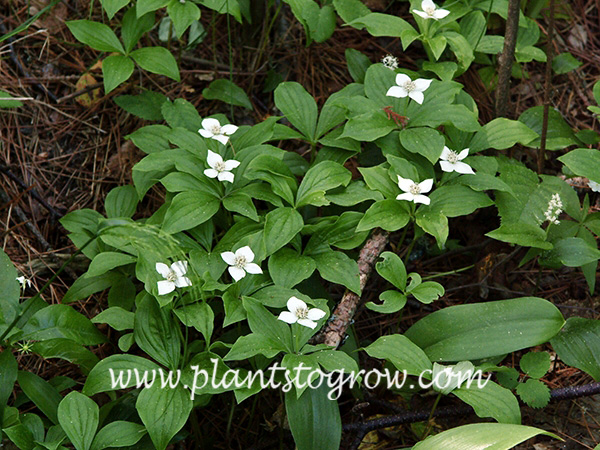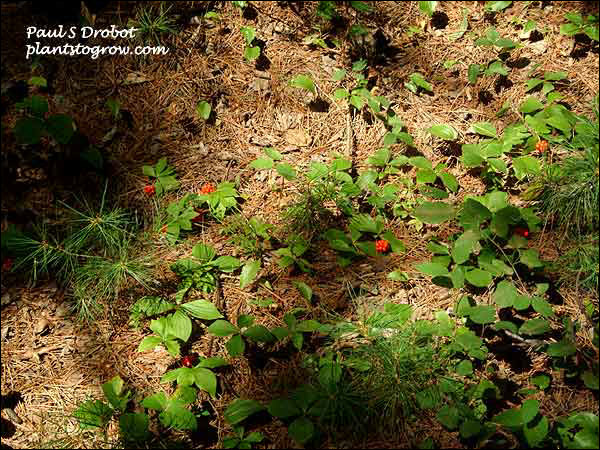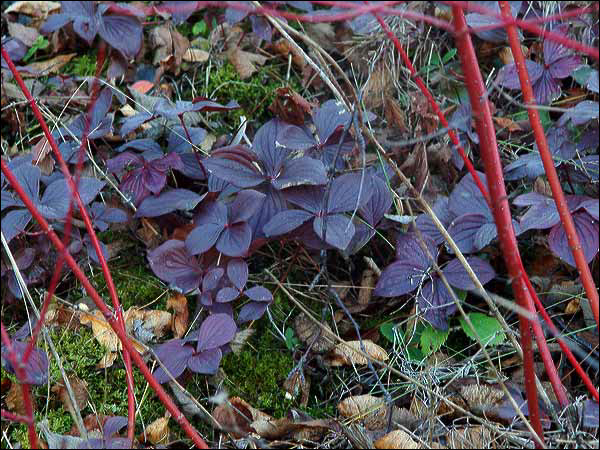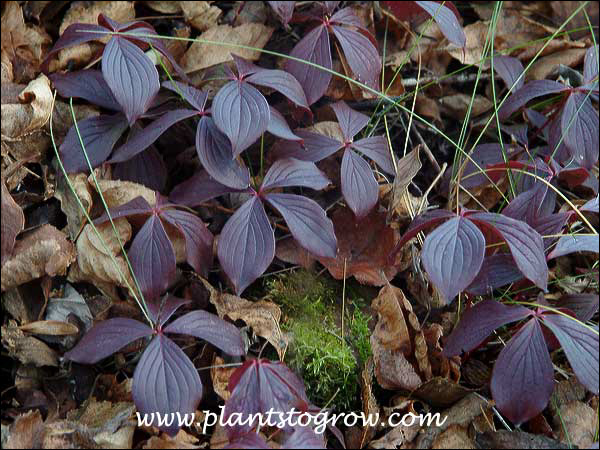| Description | Bunchberry (Cornus canadensis) is a beautiful native wildflower that requires some special conditions to properly grow. Prefers the cool moist woods. Spreads by rhizoms forming thick patches. |
|---|---|
| Plant Type | Wild Flowers, Site author's observations |
| Hardiness Zone | 2-6 |
| Sunlight | shaded |
| Moisture | moist, damp, open deciduous woods, never dry |
| Soil & Site | humus rich well drained, ph of 4-5 (acid) |
| Temperature | cool |
| Flowers | greenish-white and found in terminal clusters, surrounded by four petal-like white bracts (bracts are modified leaves, like the red bracts of a Poinsettia |
| Fruit | clusters of bright red berries, used as a food source for Native Americans (#13) |
| Leaves | usually 4-6 inches, toothless, elliptical on a 6-9 inch stalk forming a flat whorl |
| Stems | spreading thin rhizomes |
| Roots | adventitious roots off of the rhizome |
| Dimensions | In congenial growing conditions, it will spread by underground rhizomes. Reaches a height of 6-9 inches. It is not a very rapid spreading ground cover. Considered to be a sub-shrub. |
| Propagation | Very difficult from seeds; careful divisions of the sod is probably the best way. |
| Native Site | Wide range from Canada and south, New Jersey, West Virginia, Indiana, Colorado, and California. |
| Misc Facts | Genus's name comes from the Latin word cornu, meaning horn, in probable reference to the strength and density of the wood. Cornus is also the Latin name for cornelian cherry. Genus name is about the native habitat of this plant which includes Canada. This is the smallest member of the Dogwood family. It is an important food source for the Spring Azure butterfly caterpillars. AKA: Dwarf Cornel, Creeping Dogwood, Crackerberry |
| Author's Notes | Two things have got me excited about this plant. I discovered some in a moist forest in Upper Michigan, this being the first time I saw this plant in the wild. The second is when I was walking in Billings Park (Superior, Wisconsin, USA) on a freezing day in the fall. On a rocky slope facing Lake Superior was a patch of Bunchberry displaying its purple fall foliage. I snapped a bunch of pictures!! |
| Notes & Reference | #07- Newcomb's Wildflower Guide (Newcomb), #13-Growing Woodland Plants (Birdseye), #41-Wildflowers of Wisconsin (Stan Tekiela) |

Cart
